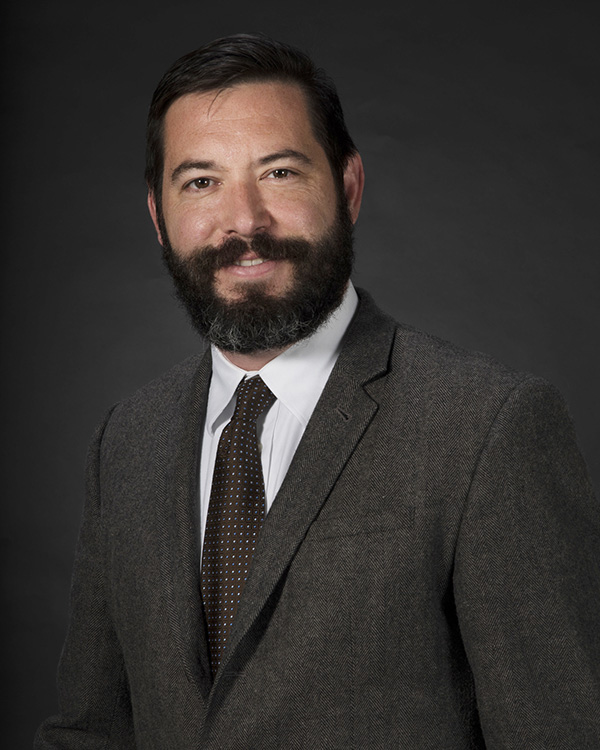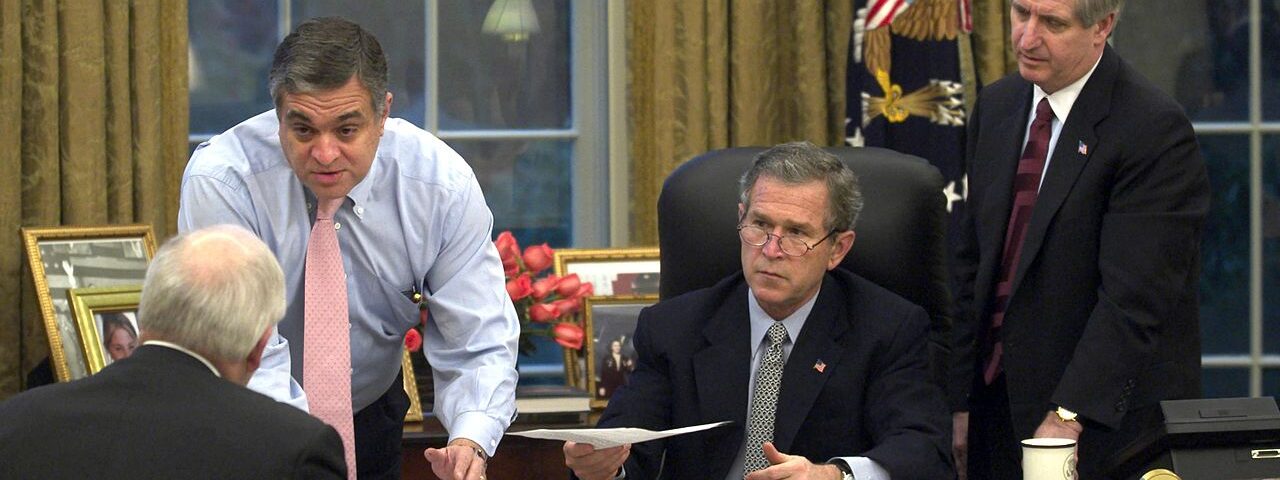BOTTOM LINE
- American war planners’ failure to understand Iraqi politics and society was their most important intelligence failure.
- The violence in Iraq after the American invasion in 2003 resulted from a political void that Americans failed to anticipate.
Editor’s Note: FPRI is publishing a collection of essays to mark the twentieth anniversary of the start of the Iraq War. The articles analyze the war’s impact on US influence in the Middle East, America’s global standing, and US democracy promotion efforts. In addition, our authors explore the legacy of Operation Iraqi Freedom, and argue that the inability of American officials to understand Iraqi politics was perhaps the most important intelligence failure of the entire war effort.
Before the Iraq War descended into the extended tragedy of insurgents, counterinsurgents, and the apocalyptic terror of the Islamic State, it was based on several misperceptions about Saddam Hussein’s regime in Baghdad. In the imagination of George W. Bush, the nexus of Iraq’s weapons of mass destruction and its support for terrorists like al Qaeda formed an unacceptable threat to American security. Yet, the fixation on these issues has drowned out a more important but less analyzed intelligence failure.
The logic of the war was rooted in an assumption that Hussein’s regime was a shell of its former self, that it enjoyed little support inside Iraq, and consequently that it had relied increasingly on Sunni sectarianism to rule over a majority Shia population. In hindsight, American policymakers and war-planners completely misjudged the political realities in the country they invaded. If they had not so grossly misunderstood Iraqi politics and society, and thus the ability of the country to quickly transition to democracy, other US failures would have been a mere footnote in the otherwise inspiring story of Iraq’s liberation from a cruel dictator. Investigating the Bush administration’s failure in this regard is not some game of alternative history or what could have been; rather, it provides important lessons about the limits of military power for future statesmen.
In 2003, American officials believed that over the course of the 1990s, sanctions, weapons inspections, and no-fly-zones led Saddam’s regime to lose control over large swaths of the Iraqi population, especially in the Shia-dominated south. The Iraqi dissident-turned-Brandeis-professor, Kanan Makiya, told senior US officials that Saddam no longer dominated Iraqi society. He predicted that the American invaders would be greeted with “sweets and flowers” as they marched to Baghdad. The influential Princeton University historian, Bernard Lewis, informed Vice President Dick Cheney that Iraq was an “already crumbling tyranny.” Likewise, American war-planners depicted Saddam’s regime as a “balloon” that only required a small prick to pop. Other Bush administration officials described Iraq as “a crystal goblet,” which they just needed to “tap” and “it would crack.” An American Army colonel who oversaw the planning of the ground invasion later lamented, “there was an expectation from the start that the Iraqi regime was a house of cards and all it would take was one stiff wind and it would fall.” Inherent in these statements is the idea that while the regime would fall, institutions and society, which were increasingly outside the regime’s control, would remain intact and would be primed for a gentler, more democratic regime to take its place.
In fact, Hussein’s regime was much more robust and entrenched than any outsider understood. Internal Iraqi records clearly demonstrate that the ruling Baath Party continued to control almost all aspects of Iraqi political and social life until the regime’s demise in 2003. As the emanant Georgetown historian, Joseph Sassoon, has argued, “we now know from the archives that the Ba‘th Party did not weaken in the 1990s: no committee was ever set up without a representative of the party secretariat, and membership increased by roughly 38 percent between 1991 and 1996.”
Moreover, while Hussein was one of the late-20th century’s most brutal dictators, his regime spent decades constructing a system to suppress sectarianism and religious extremism in the country. Militant Islamists like the Sadrist movement were driven underground in Shia areas. Wahhabis, the Muslim Brotherhood, and other extremists were rooted out in Sunni districts.
When the American-led coalition rumbled over the border, it expected to quickly dispatch the Iraqi military and then rule with a light footprint. This was not a well-conceived plan, to say the least. Just because Iraqis acquiesced to a brutal, homegrown regime, did not mean they would accept foreign occupation. However, if—as American planners assumed—wide swaths of Iraqi society were already outside of the regime’s control and largely governing themselves, then one might reasonably hope that local leaders could continue to maintain peace and stability until a new government was formed. Just as importantly, if Hussein’s regime was the cause of sectarianism and extremism, then removing it would alleviate those problems in the country.
These assumptions proved wrong on several levels. Even in the Shia south, Hussein had many supporters and the Baathists maintained a tight grip on the country. Thus, the defeat of the Baathist regime left a giant void. Militant Sadrists whom the Baathists had previously kept in check and Iranian factions pouring across the border quickly took control of Shia institutions. In Sunni areas, Islamists and Wahhabis emerged from the shadows. Whoever was willing to use more force gained the upper hand. Whatever faint hope Iraqis might have had for a better future was crushed in a torrent of ever-escalating extremism and violence as competing militias vied to fill the vacuum left by the fall of Hussein’s regime.
The failure to understand the nature of Baathist rule and Iraqi politics has been the least discussed of the American intelligence failures, but it is perhaps the most consequential. The illusion of a quick and easy war made the invasion possible. It also allowed American planners to get away with sending a fraction of the troops that were needed to occupy the country.
Perhaps most importantly, this failure has much more to teach us about future conflicts than other botched intelligence assessments. There was simply no way for outsiders to know what was happening within the murky authoritarian institutions in Hussein’s Iraq. If analysts in the United States were so wrong about the political realities of Iraq—a country on which they had focused immense amounts of money and resources for over a decade prior to invading—what are they missing elsewhere? This should give future statesmen and strategists pause. When a foreign military storms across a border, it never knows what it might find.
The views expressed in this article are those of the author alone and do not necessarily reflect the position of the Foreign Policy Research Institute, a non-partisan organization that seeks to publish well-argued, policy-oriented articles on American foreign policy and national security priorities.

Samuel Helfont
Senior Fellow – Middle East Program
Research Areas:
Islam, Saddam Hussein, religion, Insurgencies in Iraq
Samuel Helfont is a Senior Fellow in the Foreign Policy Research Institute’s Program on the Middle East, and an Assistant Professor of Strategy and Policy in the Naval War College program at the Naval Postgraduate School in Monterey, California. He is the author of Iraq against the World: Saddam, America, and the Post-Cold War Order (Oxford University Press, 2023), and Compulsion in Religion: Saddam Hussein, Islam, and the Roots of Insurgencies in Iraq (Oxford University Press, 2018). His work has been published by Foreign Affairs, The International History Review, The Middle East Journal, Texas National Security Review, Orbis, The Washington Post, The New Republic, The American Interest, and War on the Rocks, among other outlets.
Helfont holds a PhD in Near Eastern Studies from Princeton University. Prior to moving to Monterey, he completed a three-year post-doctoral lectureship at the University of Pennsylvania. In addition to this academic background, Helfont served as an intelligence officer in the US Navy and Navy Reserve. An Iraq War veteran, he completed deployments both afloat and ashore in the Middle East. For more see: www.SamuelHelfont.com.

